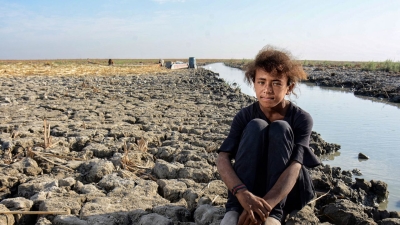How our clothes increase climate change problems
First Bank

Have you ever realized that every new piece of clothing you buy can cost the environment a lot?! From resource consumption to the amount of pollutants released into nature during manufacturing processes, and finally their negative impact when thrown into the bin?!
It may seem to you that one piece of clothing is environmentally unaffecting, but if we look at the environmental impact of producing between 80 and 150 billion clothing items a year, according to British Regiment magazine, we will find that the environmental impact of this industry is huge.
Clothing production has doubled in the last decade and half owing, inter alia, to an increase in the global middle-class population, higher purchasing power in developing countries, increased per capita sales in emerging economies, and increased popularity of fast fashion
hence; Mass production of clothing in the world has caused serious environmental damage to the planet and organisms, and the industry is known as among the most depleted and environmentally polluting natural resources, as well as environmental problems resulting from low recycling rates of used clothing.
The garment industry is the second most water-consuming industry in the world. which consumes about 79 billion cubic meters annually in the industry, This is a huge figure given that more than 2.7 billion people have problems with access to adequate water. For example, making a single cotton shirt requires 2,700 liters of water", which is enough to provide one person with drinking water for 900 days
Many estimates suggest that environmental damage to clothing persists even after use, since 87% of clothing purchased and worn by consumers is disposed of in landfills or via incineration, which in turn results in financial and environmental losses, including loss of physical value of clothing, consumption of space in landfills, and waste of money
The worst aspect of disposal is that the vast majority of them are not recycled. Of the materials used in the garment industry, less than 1% is recycled to new clothes ", resulting in a loss of more than $100 billion each year, Much of the problem is due to the nature of the materials from which garments are made and the insufficient techniques for recycling them. Dumping clothes in garbage baskets causes significant damage to public health and the environment because of their degradation into toxic substances. One of these substances is methane, which comes out when burning waste, and is considered to be at least 28 times more powerful in its impact on global warming than carbon dioxide, exacerbating the problem of global warming.
Industrial fibers in these clothing can also take many years to decompose at landfill sites, with polyester remaining on average for at least 200 years
After years of degradation, dyes and chemicals leak from clothing to soil and groundwater, emitting greenhouse gases into the atmosphere
Garment problems go beyond being analyzed in landfills and burned, to include plastic pollution in the oceans, as many of these garments are made of nylon or polyester, which are durable and cheap materials that contribute to the formation of microplastics that pollute marine environments significantly
Textiles account for about 9% of annual losses of microplastics reaching the oceans, threatening marine life
Besides their other effects, low-quality handmade fabrics produce microplastic fibres when washed, which end in the human food chain and water, as during each drying cycle, clothing releases fine strands that travel through sewage systems, and eventually end up in watercourses
Half a million tons of these contaminants are released annually from washed clothing, 16 times more than cosmetic microplastics, which is equivalent to plastic contamination of more than 50 billion bottles, according to UNEP estimates.
In conclusion, we can all play a role in reducing the environmental impact of the garment industry by making informed purchasing decisions and supporting sustainable practices. Protecting our planet for future generations requires all of us to work together to reduce our carbon footprint.













